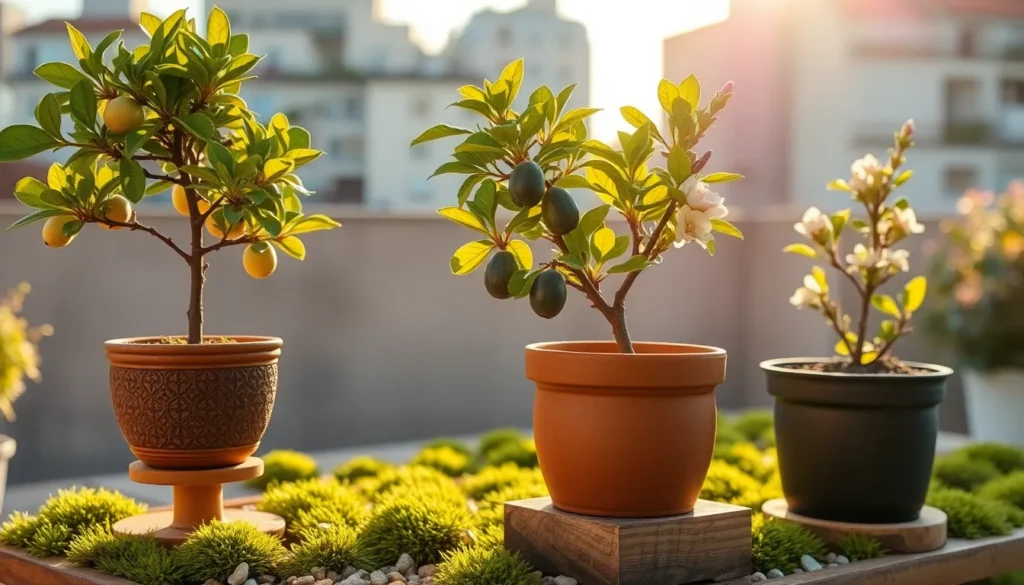For those who have long dreamt of plucking ripe, juicy fruit straight from their own trees but thought their limited space was a barrier, there’s good news—your dream is entirely possible! Whether you’re a seasoned horticulturist or a newcomer to the world of green thumbs, the art of growing fruit trees in small spaces is a rewarding venture that’s more achievable than you might imagine.
In today’s bustling urban environments, maximizing every inch of your garden is crucial, and fruit trees can be a brilliant addition to even the tiniest of plots. You’ll discover techniques that ensure your trees not only survive but thrive, offering bountiful harvests and a touch of natural beauty to your home.
This guide will walk you through selecting the right tree varieties, understanding the essentials of container gardening, and mastering the art of pruning for optimal growth. Along the way, you’ll gain confidence and skills that will transform your space into a fruitful oasis, whether it’s a balcony, a patio, or a compact backyard.
Select Space-Saving Tree Varieties
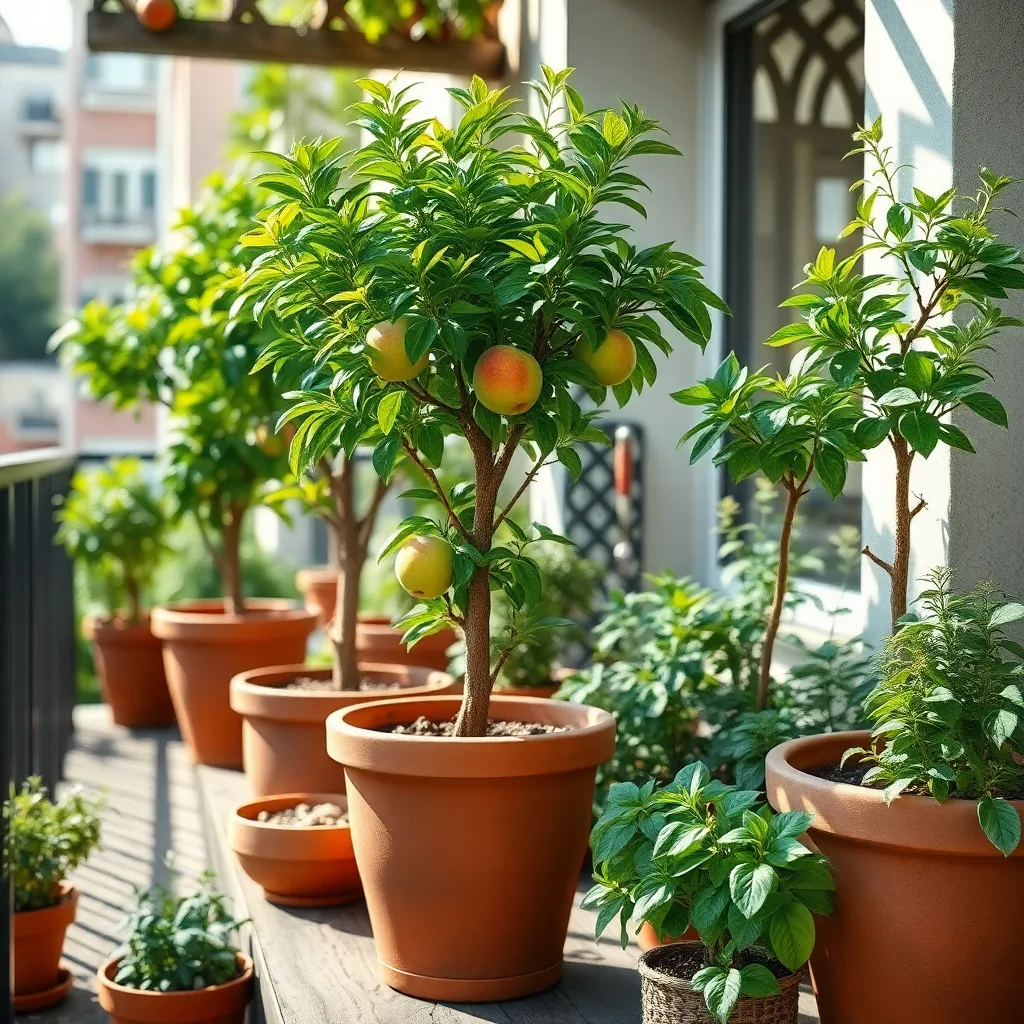
When space is limited, consider planting dwarf or semi-dwarf fruit trees, which are specifically bred to remain small. These trees can thrive in compact areas, and their smaller size makes maintenance tasks like pruning and harvesting much easier.
Opt for varieties such as Meyer lemon or columnar apple trees, which are perfect for small gardens or even containers. These trees require well-draining soil—consider a mix of compost and sandy loam—and should be watered deeply once a week, adjusting for rainfall.
For those seeking something a bit different, compact cherry trees like the ‘Stella’ variety can be an excellent choice. They enjoy full sun and can be grown in pots with a minimum size of 18 inches in diameter, ensuring the container has good drainage holes to prevent root rot.
Advanced gardeners might consider espalier techniques, which involve training trees to grow flat against a fence or wall. This method not only saves space but also creates a unique and decorative element in your garden, while still allowing the trees to bear fruit.
Prepare Containers for Planting
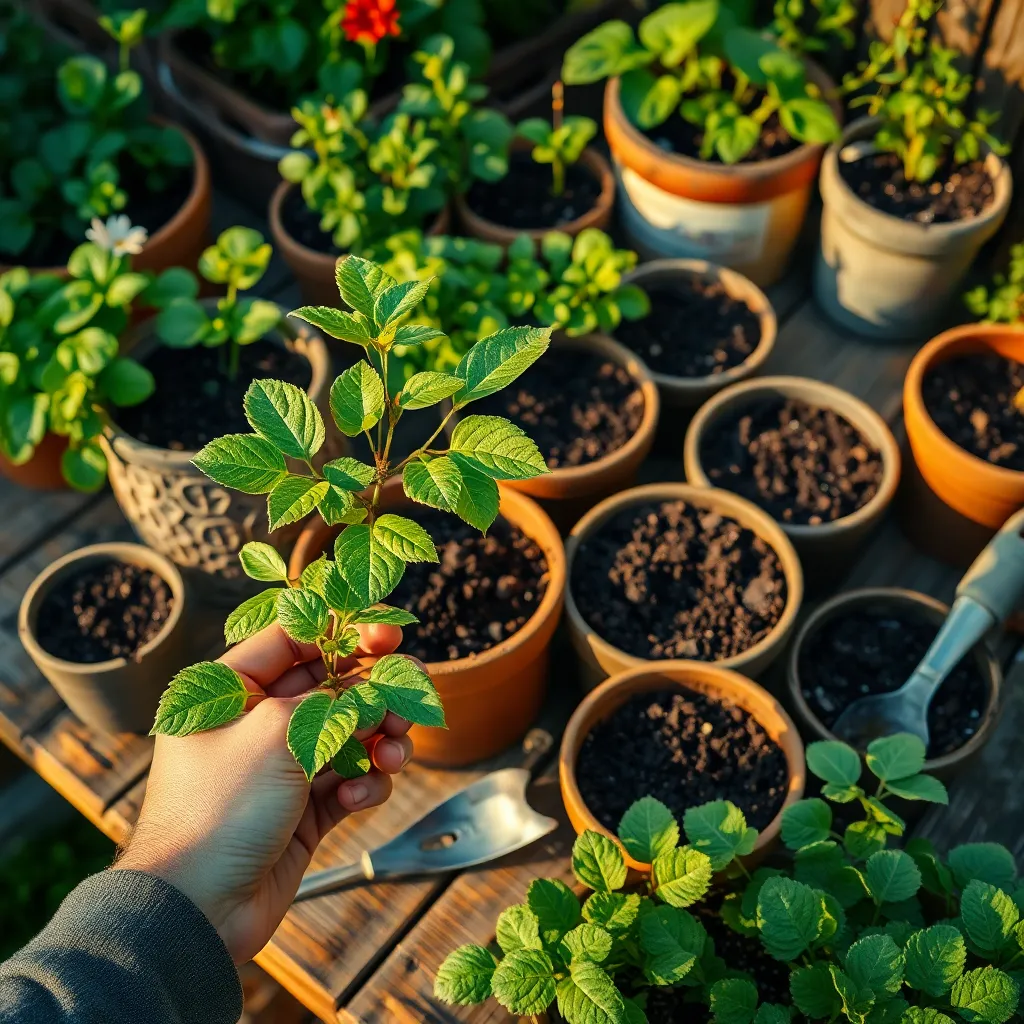
To effectively grow fruit trees in containers, start by selecting the right size pot for your tree variety. A container that is too small can limit root development, so aim for one that is at least 15-20 gallons in capacity to support healthy growth.
Choose containers made from durable materials such as ceramic, plastic, or wood, which can withstand outdoor conditions. Ensure the pots have adequate drainage holes to prevent waterlogging, which can lead to root rot.
Begin by placing a layer of gravel or broken pottery at the bottom of the container to enhance drainage. This simple step can help create a healthier environment for your tree’s roots by preventing excess moisture retention.
Next, fill the container with a well-draining potting mix that is rich in organic matter. A mix specifically designed for fruit trees or a blend of equal parts compost, peat moss, and perlite will provide the necessary nutrients and aeration.
After planting, water the tree thoroughly until you see water draining from the bottom of the pot. Consistent watering is crucial, especially during the growing season; aim to keep the soil consistently moist but not waterlogged.
For advanced gardeners, consider incorporating a slow-release fertilizer into the soil mix at the time of planting. This will ensure your fruit tree receives a steady supply of nutrients over several months, promoting robust growth and fruit production.
Plant Trees with Adequate Depth
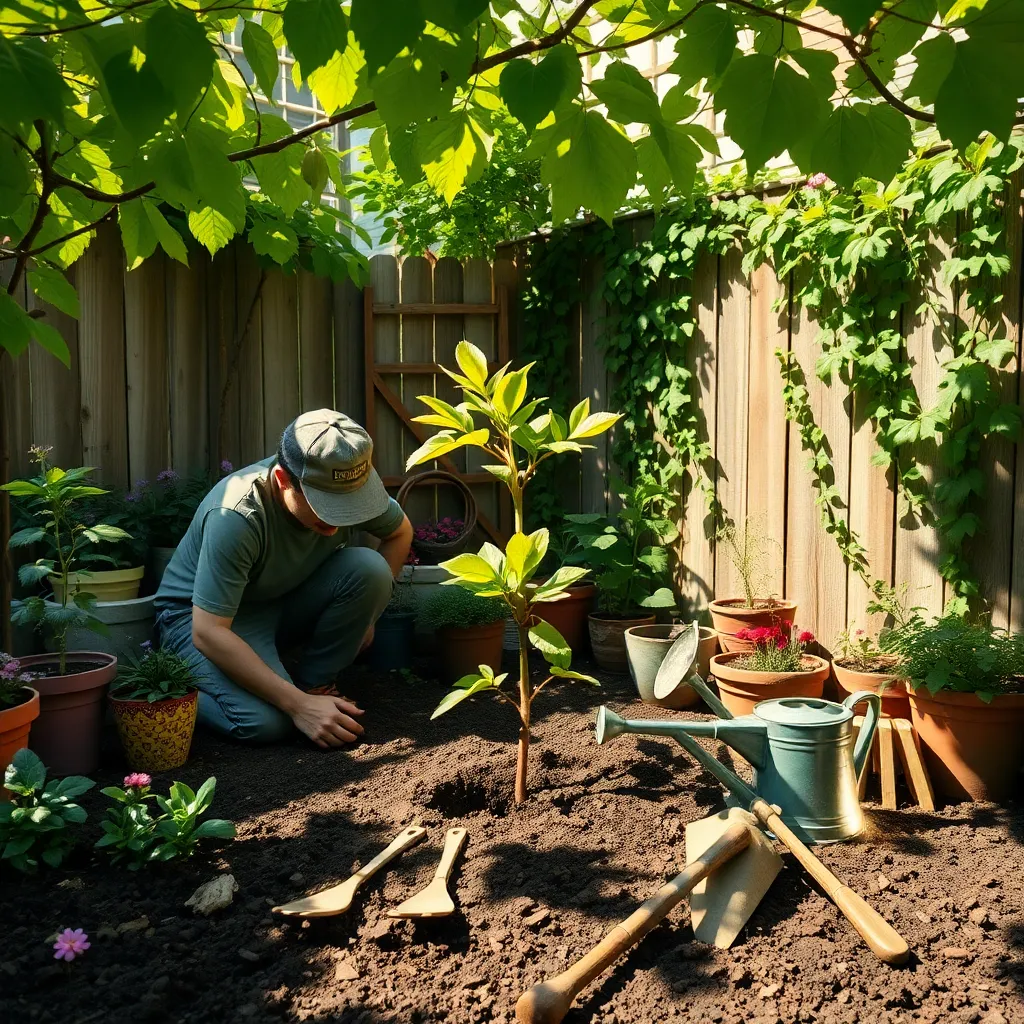
When planting fruit trees in small spaces, it’s crucial to ensure the trees are planted at the correct depth. Planting too deep or too shallow can hinder root development and affect the tree’s overall health.
Aim to plant the tree so that the graft union—the point where the rootstock meets the scion—remains above the soil line. This prevents the scion from developing roots, ensuring the tree maintains its desired characteristics.
Before planting, dig a hole that is about twice the width of the root ball but only as deep as the root ball itself. This encourages roots to grow outward, which is essential for stability and nutrient uptake.
Consider using a mix of high-quality potting soil and organic matter, such as compost, to fill the hole. This combination provides adequate drainage and nutrient retention, crucial for fruit tree growth in confined spaces.
After planting, water the tree thoroughly to help the soil settle around the roots. Regular watering is essential, particularly during the first growing season, to establish a strong root system.
- Check soil moisture frequently, especially in containers, as they can dry out quickly.
- Adjust watering based on seasonal weather conditions, reducing frequency during rainy periods.
For advanced gardeners, consider adding a layer of mulch around the tree base to conserve moisture and regulate soil temperature. This practice also helps suppress weeds, which can compete with the tree for nutrients.
Implement Efficient Watering Techniques
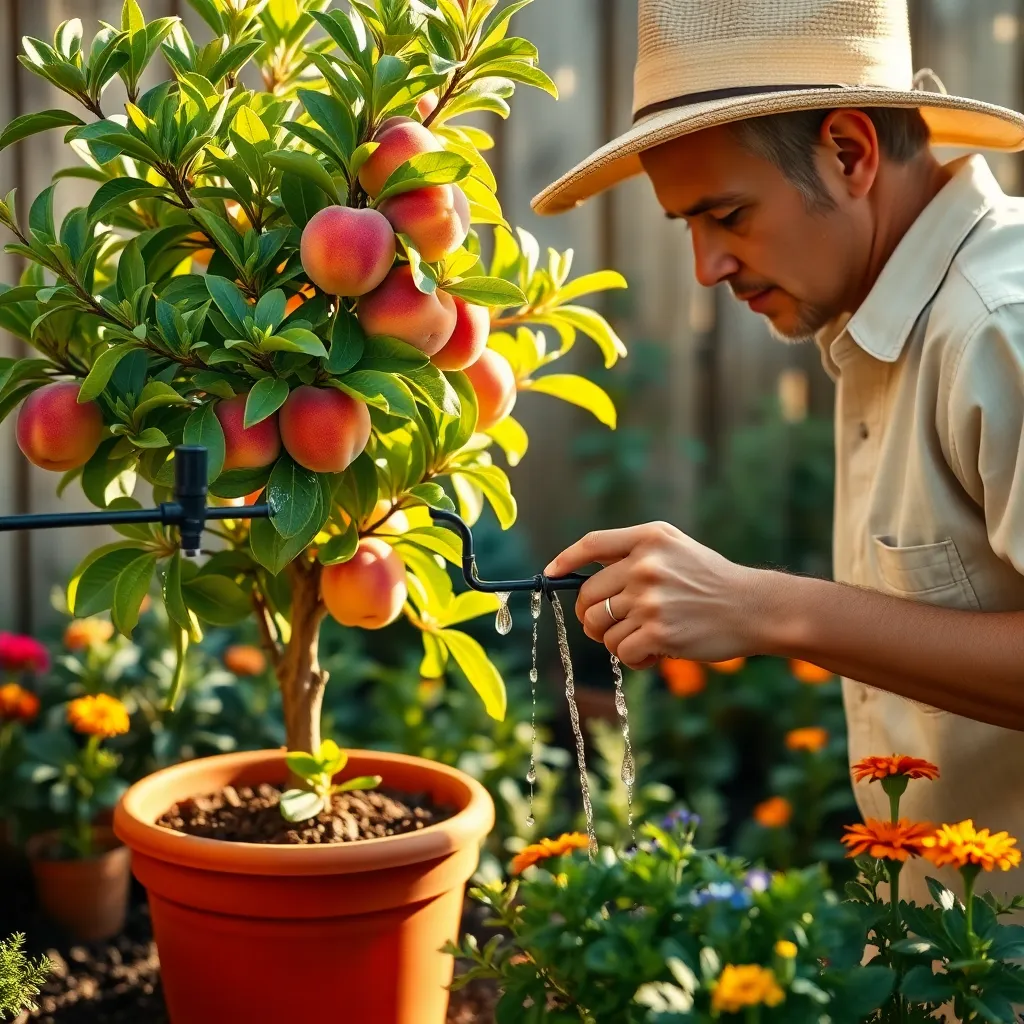
Watering efficiently is crucial for the health and productivity of fruit trees, especially in small spaces where resources are limited. Begin by assessing the needs of your specific fruit tree species as some may require more water than others.
It is important to water deeply but infrequently to encourage roots to grow deeper into the soil. A general rule of thumb is to water when the top inch of soil feels dry to the touch, which usually translates to once or twice a week depending on your climate.
Utilize mulching techniques to retain moisture and reduce evaporation from the soil. Organic mulches like straw or wood chips are excellent choices, as they also improve soil quality over time.
For more advanced gardeners, consider installing a drip irrigation system to deliver water directly to the root zone. This method is highly efficient, reduces water wastage, and can be easily managed with a timer for optimal water delivery.
Prune Regularly for Optimal Growth
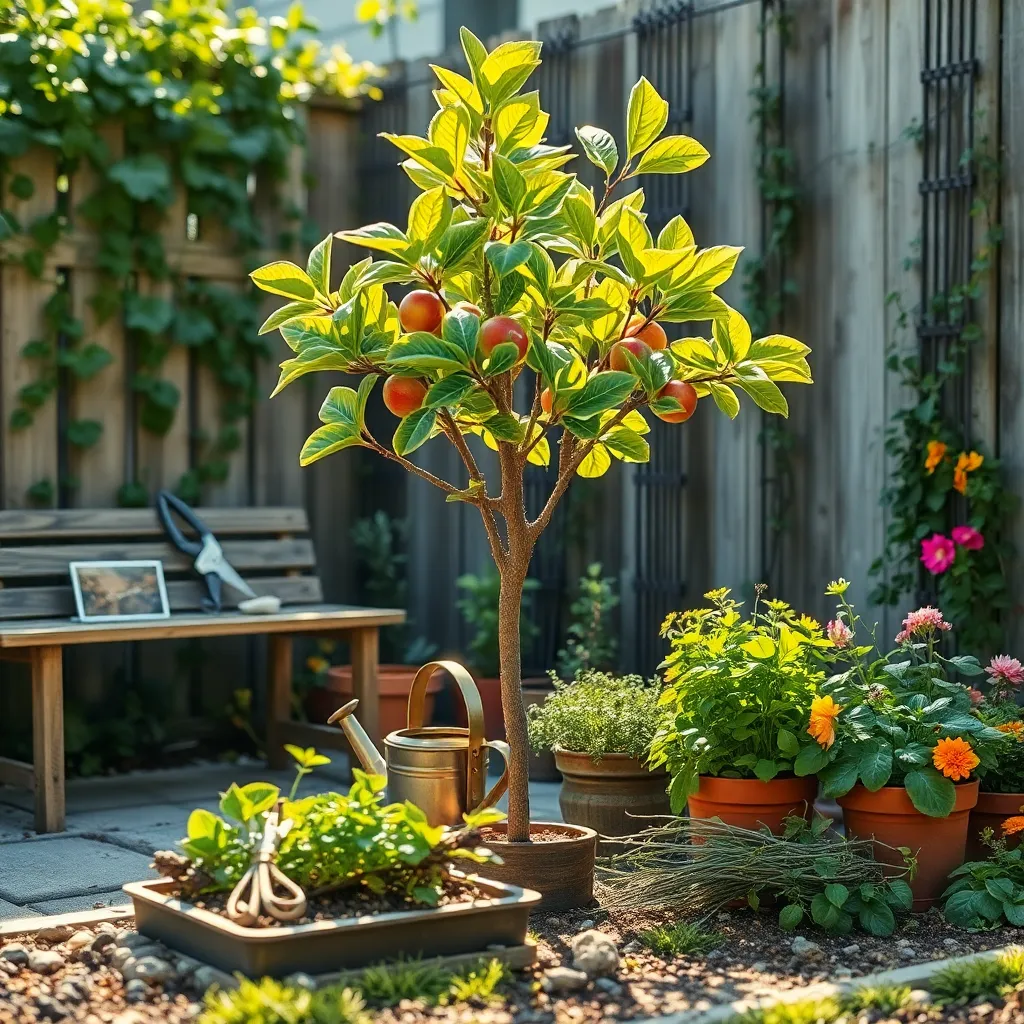
Regular pruning is essential for managing the size of fruit trees in small spaces. By removing dead or overcrowded branches, you can ensure your tree receives ample sunlight and air circulation, which is crucial for optimal fruit production.
Start with thinning cuts, which involve removing entire branches back to the main trunk or parent branch. This technique helps to control the tree’s shape and encourages healthy, vigorous growth by allowing more light to penetrate the canopy.
For beginners, it’s best to prune during the dormant season, typically in late winter, to minimize stress on the tree. Advanced gardeners might also perform summer pruning to further manage growth and enhance fruit quality.
Always use clean, sharp tools to make precise cuts, reducing the risk of disease. A pair of high-quality pruning shears will suffice for most small branches, while a pruning saw may be necessary for larger limbs.
Conclusion: Growing Success with These Plants
In navigating the delightful journey of growing fruit trees in small spaces, we’ve uncovered five essential relationship concepts that can transform your gardening experience. First, we explored the importance of choosing dwarf or semi-dwarf varieties to accommodate limited space, much like selecting partners who complement your life’s dimensions. Next, we discussed the art of strategic pruning, which mirrors the need to nurture and refine your relationships for optimal growth. Thirdly, container gardening emerged as a powerful analogy for creating flexible boundaries that support thriving connections. We also delved into the significance of companion planting, emphasizing the value of surrounding yourself with supportive and harmonious influences. Lastly, we highlighted the role of consistent care and attention, underscoring the necessity for regular nurturing in any flourishing relationship.
As an actionable step, consider starting with one dwarf fruit tree that resonates with your space and lifestyle, fostering growth in your gardening and relational endeavors. Remember to bookmark this article for easy reference on your journey. By applying these principles, you not only cultivate a fruitful garden but also enrich the tapestry of your relationships, paving the way for future success and fulfillment. Embrace the potential for growth today, and watch both your garden and relationships bloom.

